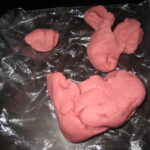Why Is My Dog Still Nesting After Giving Birth
Why Is My Dog Still Nesting After Giving Birth: Understanding Canine Maternal Behavior
When a dog gives birth, it’s natural to expect her to focus on her puppies and provide them with nurturing care. However, some dogs may exhibit unusual behavior after giving birth, such as persistent nesting or guarding of the whelping area. While this behavior may seem puzzling or even worrisome to humans, it is often a normal expression of maternal instincts in dogs. In this article, we will explore some possible reasons why your dog may still be nesting after giving birth and what you can do to support her and her puppies.
What Does Nesting Mean for Dogs?
Nesting is a term used to describe the behavior of animals that create or modify a space for their offspring before or after birth. In dogs, nesting can take various forms, such as digging a den, arranging blankets or towels, licking or grooming themselves or their puppies excessively, panting heavily, refusing food or water, being restless or anxious, growling at strangers or other pets, and avoiding human interactions. Nesting behavior usually starts before labor and intensifies during and after delivery. Some dogs may continue to nest for several days or weeks after giving birth, while others may stop once the puppies are able to move around and feed independently.
Why Do Dogs Nest After Giving Birth?
There are several possible reasons why dogs may continue to nest after giving birth. These reasons are based on the biological and social factors that shape canine maternal behavior.
1. Hormonal changes: During pregnancy and lactation, female dogs experience significant hormonal shifts that affect their brain chemistry and behavior. The release of oxytocin, also known as the bonding hormone, promotes maternal attachment and reduces stress levels in both mother and pups. This hormone also stimulates contractions during labor and milk production after birth. The surge of progesterone and estrogen can also influence mood and energy levels in dogs, making them more sensitive or irritable.
2. Protective instincts: Dogs are territorial animals that instinctively guard their offspring from potential threats. This includes other animals, humans, and environmental hazards such as cold, heat, or noise. Some dogs may perceive any intrusion into the whelping area as a danger to their puppies and respond with defensive or aggressive behavior. Nesting can thus serve as a way for dogs to create a safe and comfortable space for their young ones and ward off perceived threats.
3. Social learning: Dogs learn from their mothers and peers how to behave towards their own offspring. If a dog grew up in an environment where nesting was encouraged or rewarded by her mother or breeder, she may repeat this behavior even if it is not strictly necessary for her puppies’ survival. Similarly, if a dog sees other adult dogs nest around her, she may imitate them out of social conformity or habit.
4. Individual differences: Just like people, dogs have different personalities and temperaments that influence their behavior. Some dogs may be naturally more anxious or obsessive than others, which can manifest as excessive nesting or grooming behavior. Other dogs may be more relaxed or independent and require less maternal attention.
How Can You Help Your Dog Who Is Still Nesting After Giving Birth?
If your dog is still nesting after giving birth, there are several things you can do to support her and ensure the health and happiness of her puppies.
1. Provide a clean and comfortable environment: Make sure that the whelping area is clean, dry, and free of drafts or pests that could harm the puppies. Use soft and absorbent bedding that your dog can arrange to her liking. Offer fresh water and high-quality food that meets your dog’s nutritional needs during lactation. Avoid disturbing your dog or her puppies unnecessarily and give them plenty of space and privacy.
2. Monitor your dog’s health: Check your dog’s body temperature, appetite, and bowel movements regularly to detect any signs of illness or stress. Contact your veterinarian if you notice any abnormal symptoms such as fever, lethargy, vomiting, diarrhea, or excessive bleeding. Make sure that your dog receives proper vaccinations and deworming treatments as recommended by your vet.
3. Socialize your dog and her puppies: Once the puppies are old enough to explore their surroundings, expose them to different people, animals, and stimuli in a controlled and positive way. This can help them develop social skills and confidence that will benefit them in the long run. However, avoid exposing them to potential risks such as unvaccinated dogs or crowded places.
4. Be patient and supportive: Remember that your dog is doing her best to take care of her puppies and may need some extra time and attention to feel secure and relaxed. Avoid punishing or scolding her for nesting behavior unless it poses a real danger to the puppies or other family members. Instead, offer praise, treats, and affection when she behaves calmly and cooperatively.
Conclusion
In conclusion, nesting behavior is a common but complex aspect of canine maternal behavior that reflects the interplay between hormonal, social, and individual factors. While it may seem strange or excessive to humans at times, nesting can serve as a way for dogs to express their love and protectiveness towards their offspring. As a responsible pet owner, you can help your dog who is still nesting after giving birth by providing a safe and comfortable environment, monitoring her health closely, socializing her and her puppies appropriately, and showing patience and support. With proper care and attention, you can ensure that your dog’s motherhood journey is a rewarding experience for both her and her puppies.



